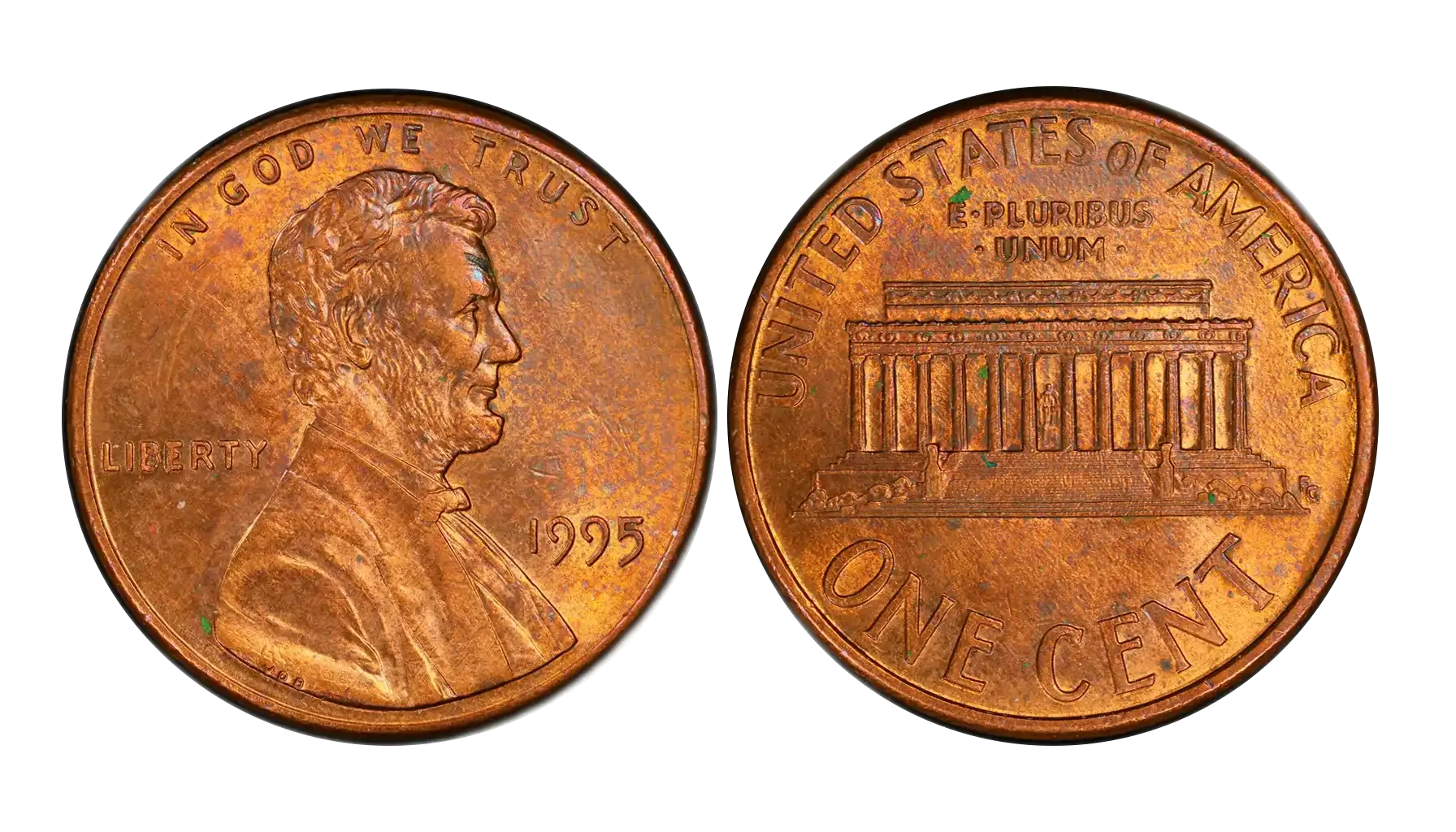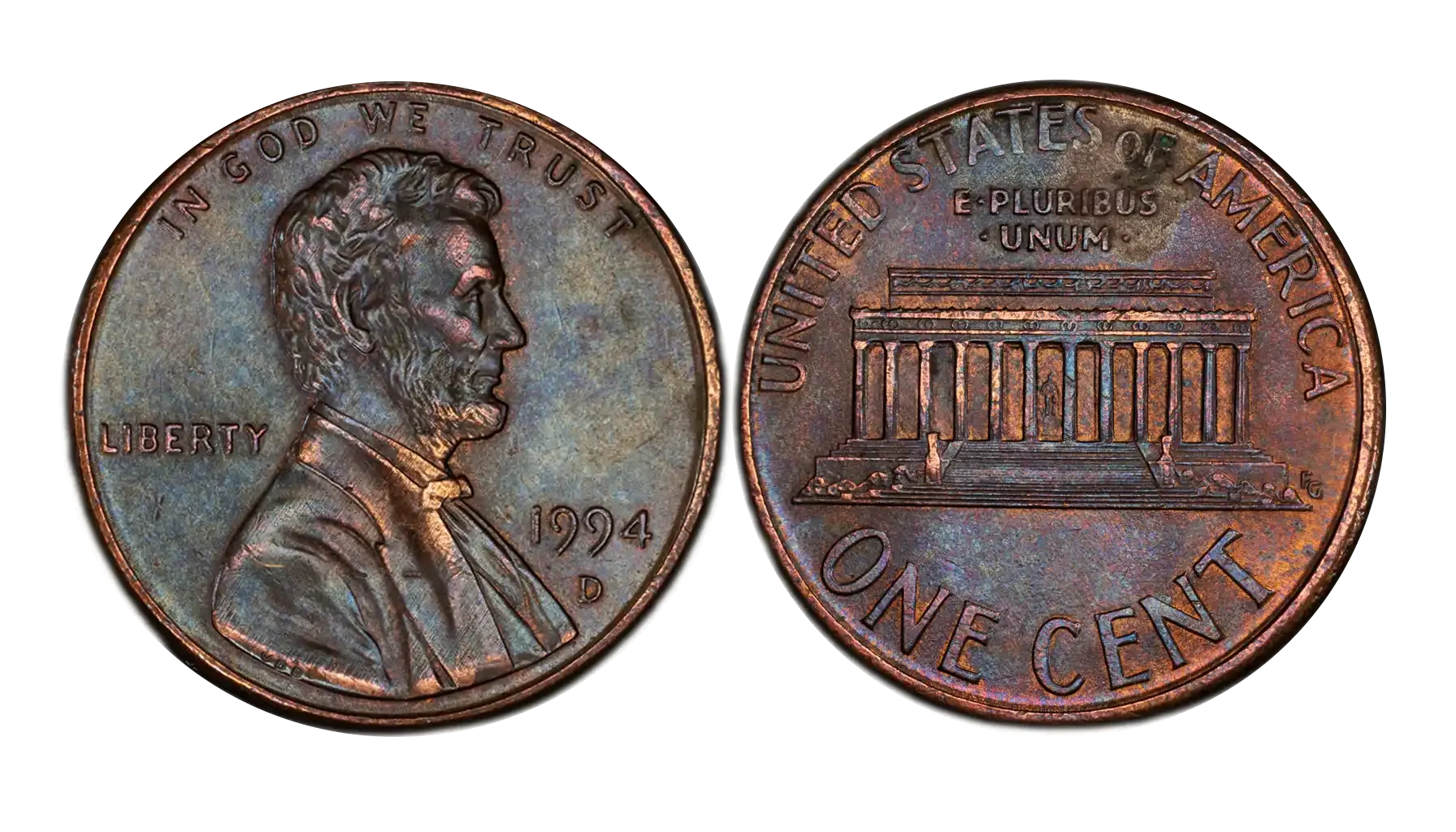Contents:
..Memories of the coins released in the past last as long as they vanish from circulation and never end up in private collections. But every so often, a coin reappears – for its age, for the story it managed to capture, and for the simple reason that it was not quite like the others. The flaws, special features, and unexpected popularity drive the prices up and welcome a forgotten relic once again…
The 1995 Lincoln penny is a coin that fits this narrative perfectly. For some people, it could be just another unit of currency from circulation, but for professional numismatists, it is a peculiar numismatic creation that holds the potential to become an asset to long for. So, what does it look like? How to check coin value, and which attributes turn one cent into a treasure?
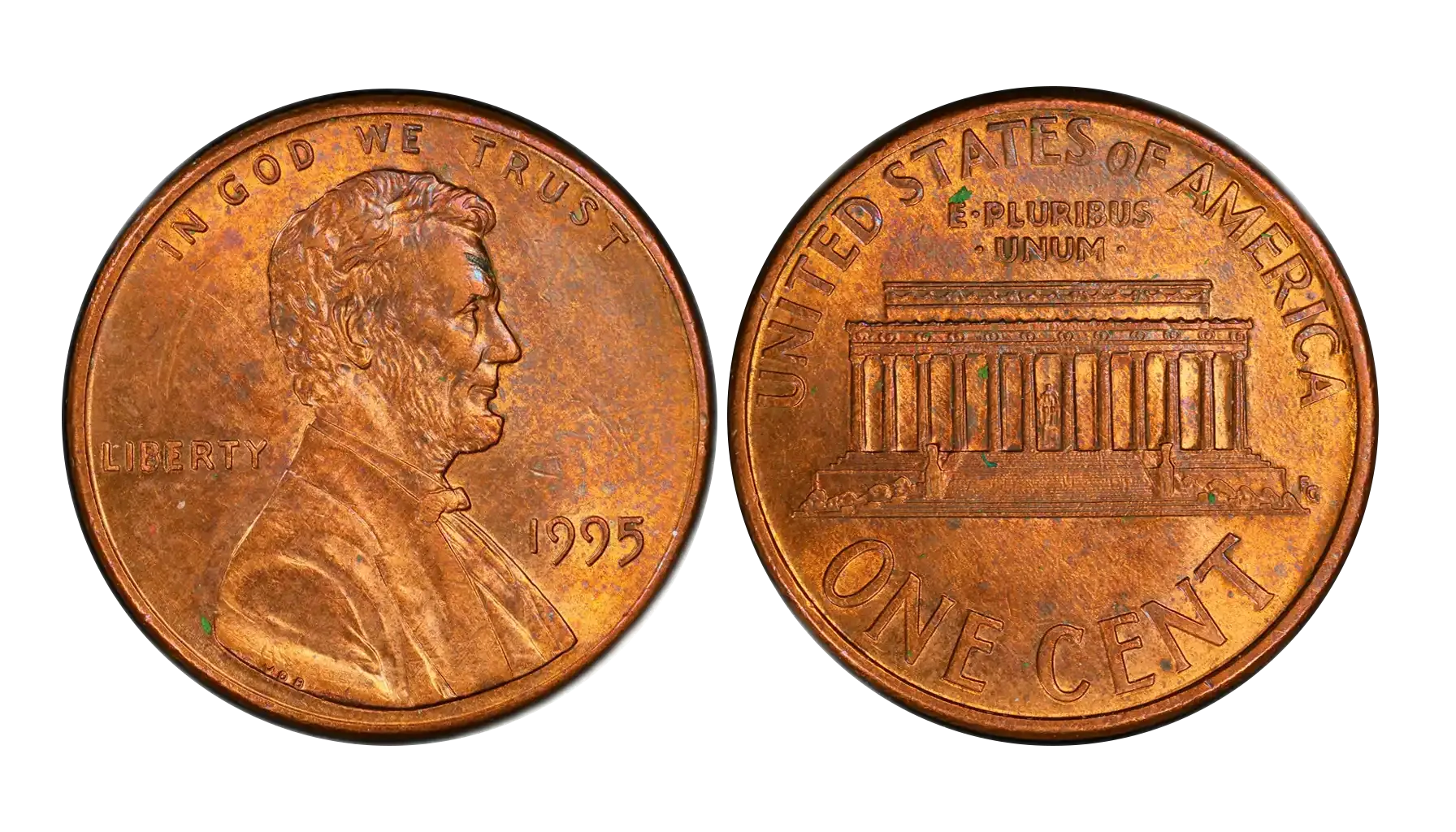
Overview of the 1995 Lincoln Cent
Obverse (Front): The obverse features a right-facing bust of Abraham Lincoln, originally sculpted by Victor David Brenner (see the 1909 VDB penny). The image is decorated with the inscriptions "IN GOD WE TRUST" along the upper rim, “LIBERTY” from the left side of the profile, the date “1995” to the right, and a mint mark beneath (if present).
Reverse (Back): The reverse showcases the Lincoln Memorial with a tiny statue of Abraham Lincoln hidden between the columns. As for the inscriptions, there appears “UNITED STATES OF AMERICA” at the top, the motto “E PLURIBUS UNUM” just below it, as well as the denomination "ONE CENT" along the bottom edge.
The Main Characteristics | |
Series | Lincoln Memorial Cent |
Designers | Obverse: Victor David Brenner Reverse: Frank Gasparro |
Mintage Period | 1959–2008 (Memorial reverse) |
Minted At | Philadelphia, Denver, and San Francisco |
Composition | 97.5% zinc, 2.5% copper plating |
Weight | 2.5 grams |
Diameter | 19.05 mm (0.75 inches) |
Thickness | 1.52 mm (0.0598 inches) |
Edge | Plain (smooth) |
Mint Marks | No mint mark for Philadelphia “D” for Denver “S” for San Francisco |
The Main Types by Minting Facility
1995 1C
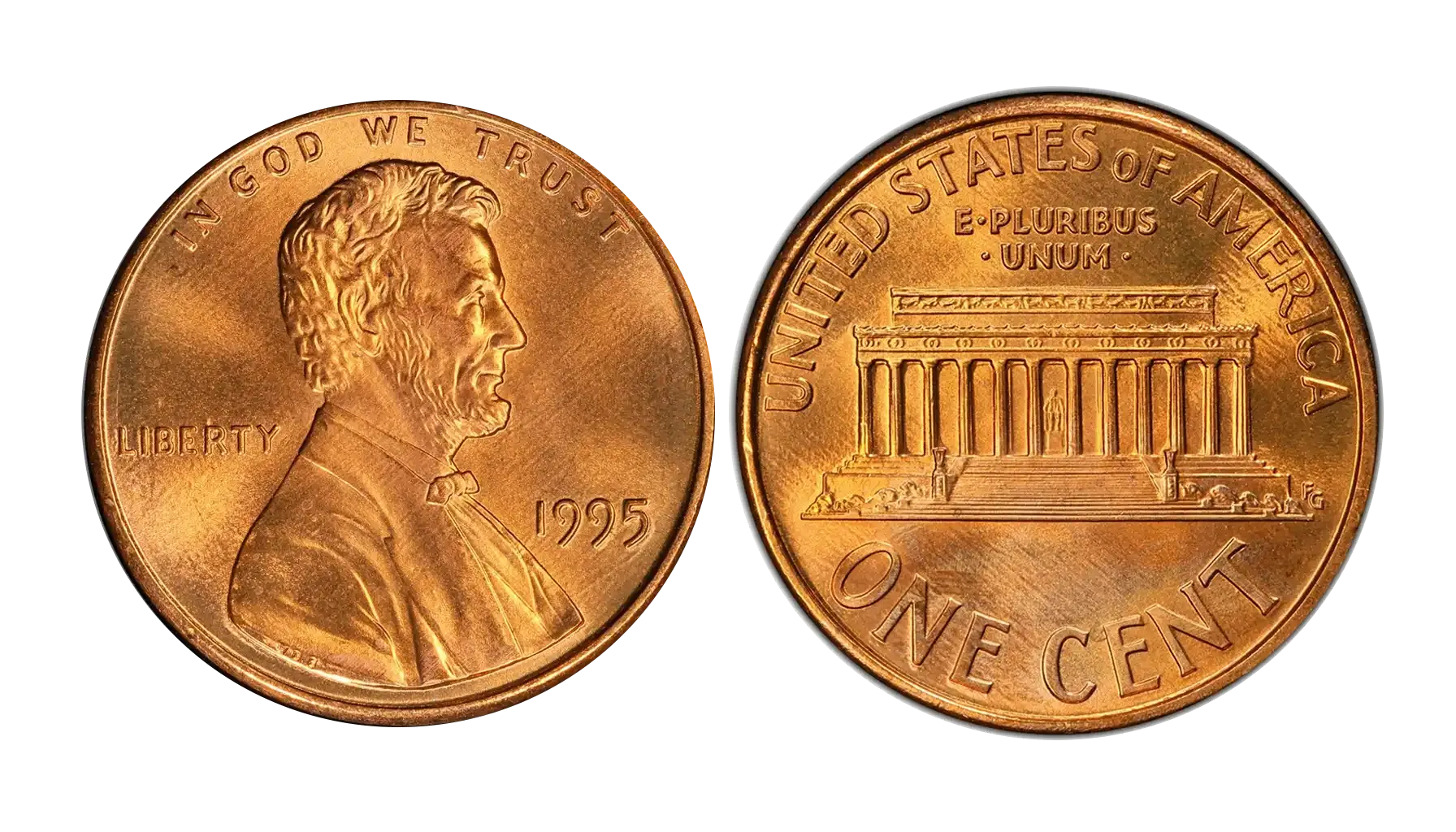
Produced by: Philadelphia Mint
Mintage: 6,411,440,000
Auction Record: $2,760 for MS69RD
As usual, the coins produced by the Philadelphia Mint are among the most valuable on record. The 1995 penny no mint mark is an average-looking issue, but there is one thing that may turn it into an exclusive piece – a dramatic double die obverse error. Although this will be covered further, it is vital to know that errors do boost value, especially if it is a 1995 double die penny.
1995-D 1C

Produced by: Denver Mint
Mintage: 7,128,560,000
Auction Record: $1,880 for MS68
The 1995 D penny value may reveal the truth about the production of coins during 1995. The Denver variety is the most common issue, with the highest mintage of any variant that year. Although pieces from general circulation can be quite boring to explore, pristine examples with full red luster and high grades are still desirable.
1995-S 1C
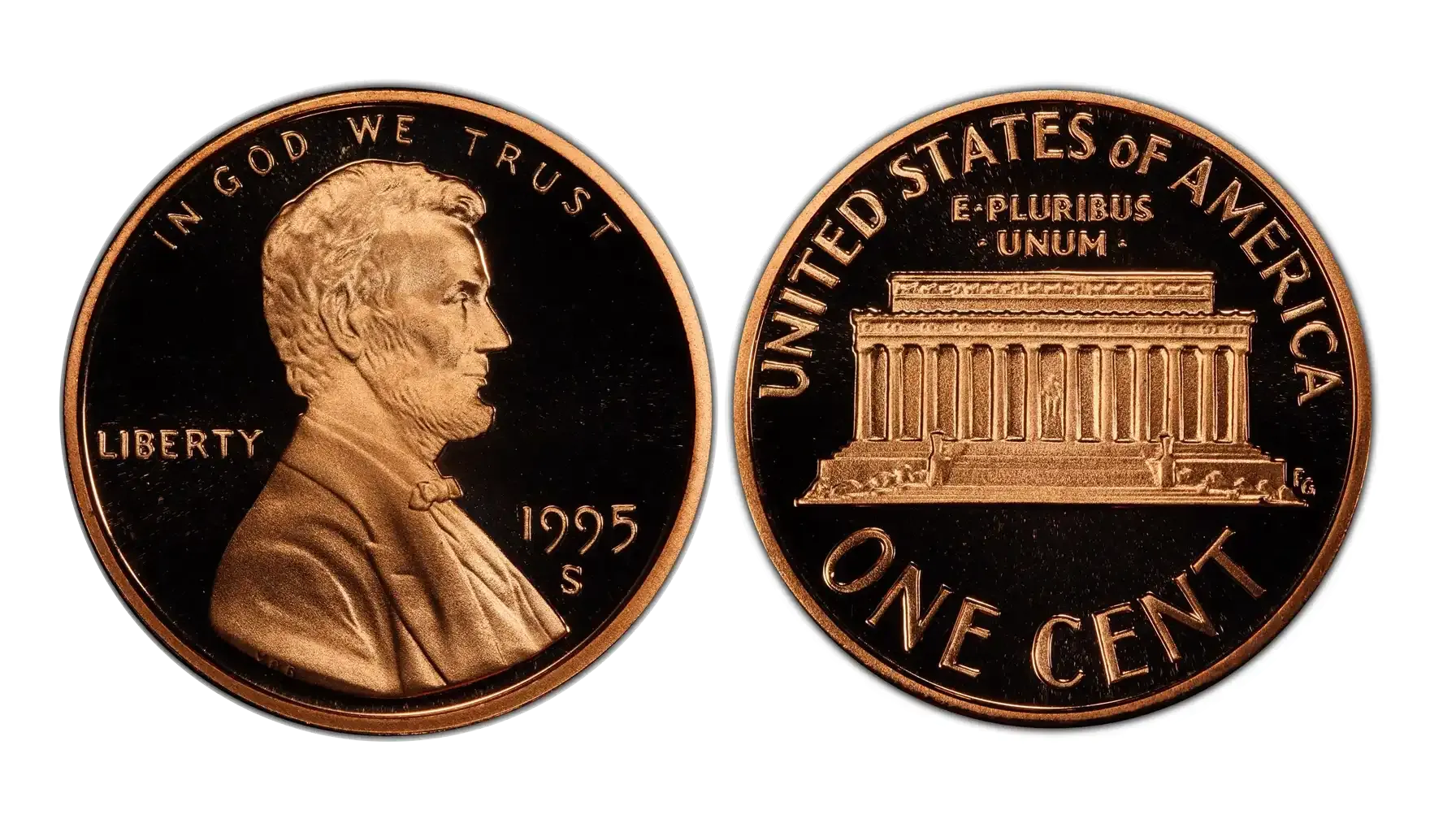
Produced by: San Francisco Mint
Mintage: 2,797,481
Auction Record: $2,530 for PR70
Not only does the public enjoy the process of coin collecting, but the collectors themselves may delve into the hunt. As such, this variety was struck exclusively for collectors as part of the 1995 Proof Set. To be more precise, it features a deep cameo finish, with sharp details and mirror-like fields – the most exquisitely created piece in the series.
Quickly About General Value Ranges by Grade
The value of a coin usually depends on several factors, namely its condition (or grade). As a rule, numismatic creations are typically graded according to the Sheldon scale, which ranges from Poor (P1) and Good (G) to Mint State (MS70)/Proof (PR70). Obviously enough, those items that have been stored for years gain competitive potential and may rise in value in an instant. Nevertheless, it is always better to get your coin officially graded – this is the only solution to make your collection prosper.
Grade | 1995 | 1995-D | 1995-S |
Good (G-4) | $0.01 (face value) | $0.01 (face value) | Not applicable |
Fine (F-12) | $0.01 | $0.01 | |
Ext. Fine (XF-40) | $0.05–$0.10 | $0.05–$0.10 | |
AU-50 | $0.15–$0.50 | $0.10–$0.30 | |
MS-60 | $1–$5 | $0.50–$2 | |
MS-63 RD | $10–$25 | $5–$15 | |
MS-65 RD | $35–$100+ | $15–$40 | |
MS-67 RD | $300–$800 (DDO only) | $100–$250 | |
MS-69 RD | Up to $2,760 (record) | Rare / Unconfirmed | |
PR-65 | – | – | $3–$8 |
PR-69 DCAM | $10–$25 | ||
PR-70 DCAM | Up to $2,530 (record) |
Are There Valuable Deviations? The 1995 Penny Error List with Pictures
Sometimes, it is about deviations that turn a simple unit of currency into a valuable asset. Exactly the same can be applied to the 1995 Lincoln cent. Let us review some of the most peculiar errors that do not depreciate over time.
1995 DDO Penny
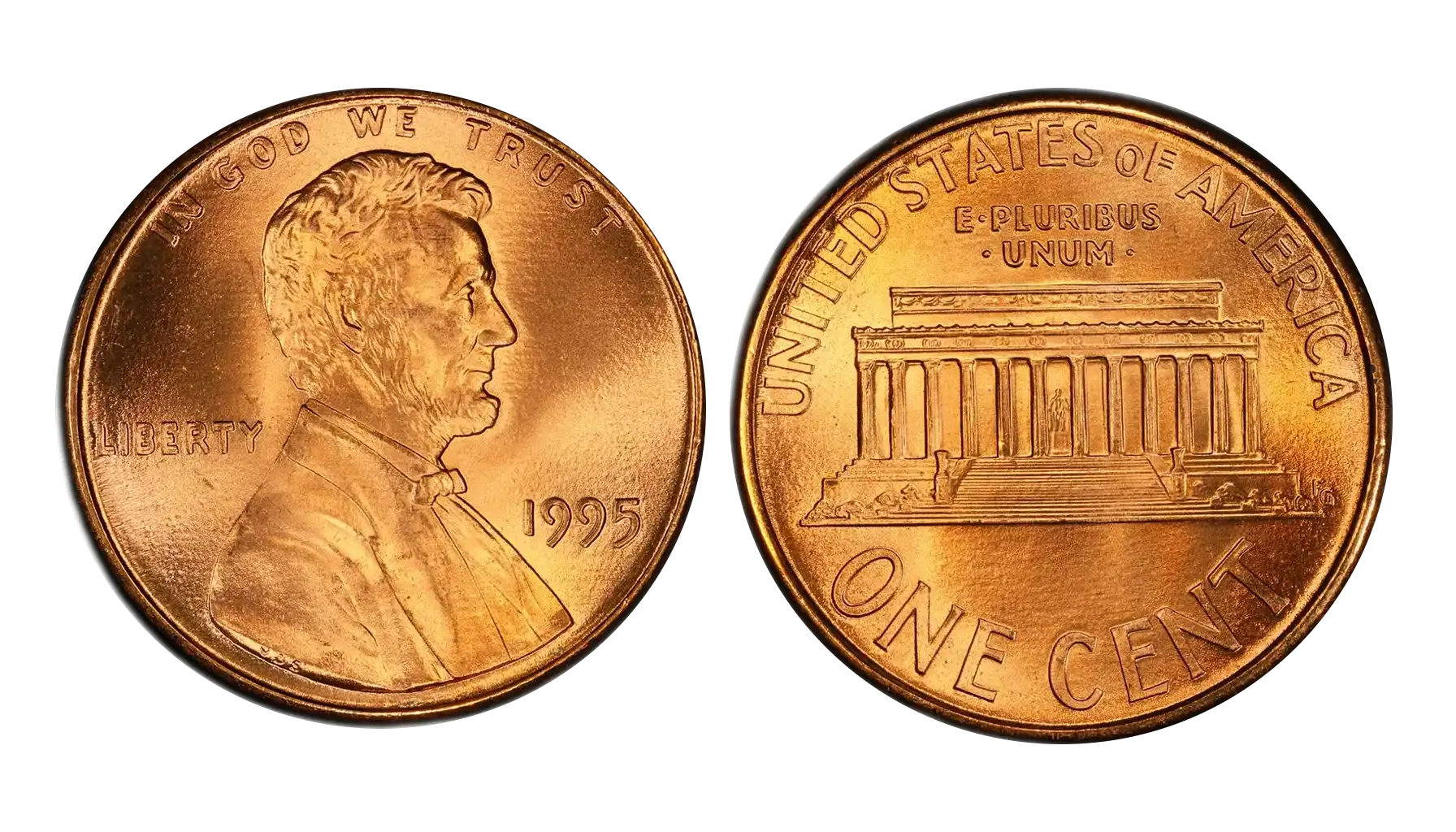
Auction Record: $5,053 for MS69RD
First comes the most well-known and valuable error of the 1995 Lincoln cent – 1995 penny double die (obverse). As such, this deviation presupposes that there should be seen a dramatic doubling of the inscriptions "LIBERTY", "IN GOD WE TRUST", and occasionally the date. According to Jaime Hernandez, it is the last of its kind and is visible to the naked eye.
Related article: Top Double Die Pennies: Identify, Value, and Collect Rare Errors
Plating Error
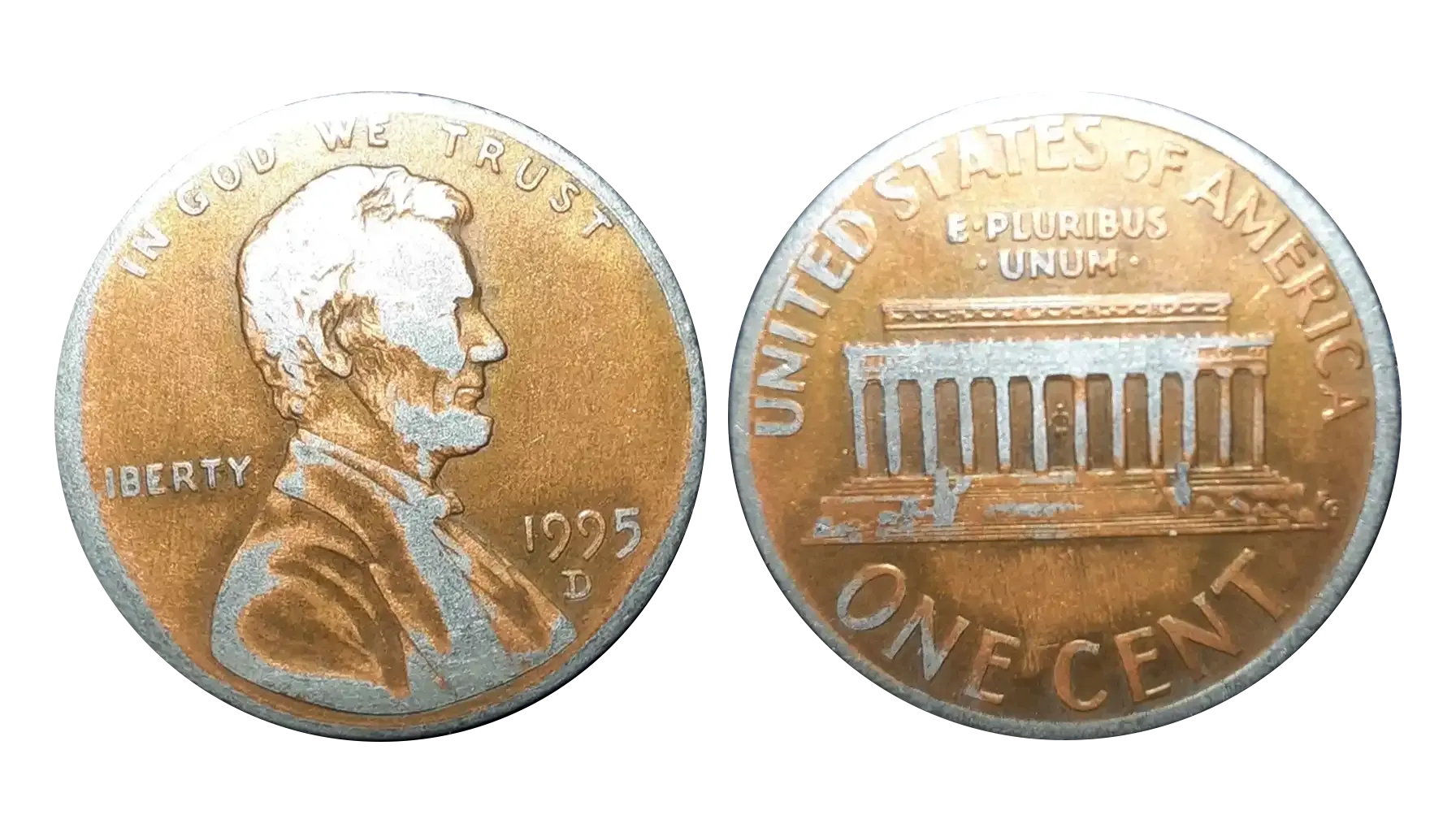
Estimated Value: $300
Plating errors occur when the thin copper layer applied over the zinc core fails during the minting process. This is exactly what may happen with this numismatic creation. As a result, one may observe blistering, peeling, or missing plating, with the gray-colored zinc underneath. Nevertheless, the severity of the deviation may define how valuable it is to become (common flaws are still common).
1995 Close AM Penny
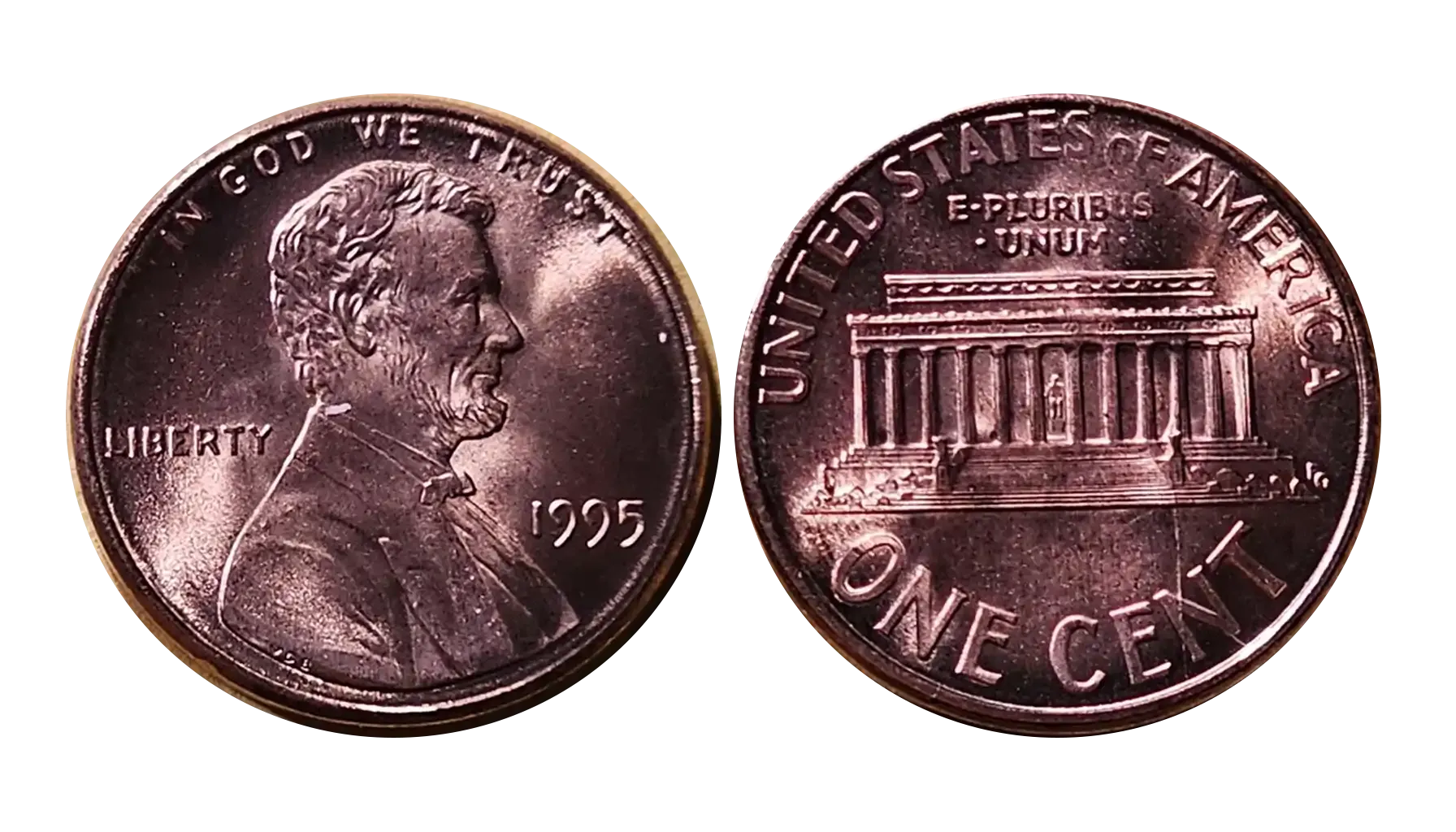
Estimated Value: $130
First, let us see what a normal cent looks like: in a standard 1995 cent, the "A" and "M" in “AMERICA” on the reverse are spaced apart. The 1995 penny close AM variety with the letters nearly touching is an anomaly, since it was not part of the design that year. If authentic (not faked), this could be the result of a reverse die confusion with a proof design. This is why any genuine sample could be of high interest.
Off-Center Strike

Estimated Value: $100
Among the most popular errors in the industry is the off-center strike, i.e., an anomaly that happens when the coin blank is misaligned in the striking chamber. The result is the missing design on the surface. As for the prices, the value increases with the degree of misalignment and the visibility of the date and mint mark.
Die Break

Estimated Value: $50
No matter how low-estimated this error could be, the market dazzles with expensive options anyway. In particular, this flaw reveals a crack or break in the die, which might have left a raised blob of metal on the final product. While smaller die cracks are common and are barely considered as true errors, those clearly distorting crucial elements like the date are more collectible.
Exploring the world of numismatics can be quite difficult. Do not fall into the trap of assumptions – leave it to Coin ID Scanner, a smart digital assistant that may help you identify coins, detect errors, manage the collections, and even more. Only one app is needed to change your numismatic experience for good!
